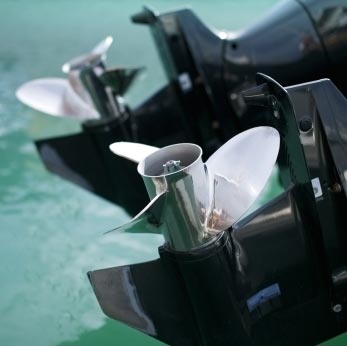< Back to part 1

How Frequent Are Accidents Involving Kill Cords?
Fortunately in the UK fatal accidents are relatively rare. However since 2005 the Marine Accident Investigation Branch (MAIB) has recorded seven fatalities caused by people being run down by their boat after being thrown from it. Eleven people were injured in the same period and there were a total of nineteen other incidents where vessels continued to run out of control because a kill cord was not used.
Some Accidents Where Lessons Can Be Learned
Boating tragedy in the Camel Estuary
In May 2013 a father and his 8 year old daughter were killed and his wife and son severely injured when they were thrown from their boat near Padstow. Their high speed RIB was apparently doing a sharp turn at 17 knots when the family were thrown from the vessel and were then struck by the boat as it continued to circle back to them. With the kill cord not being worn by the driver the engine continued to run in gear instead of cutting out and the RIB was not brought under control until a local waterskiing instructor had the presence of mind to jump on board from another craft and steer it away from the casualties.
A malfunction during a powerboat course
An embarrassing failure of a kill cord lanyard, during a demonstration on a powerboat course, resulted in the lanyard snapping, leaving the engine running and the instructor with a useless length of red plastic in his hand. It was found that the lanyard did not have the required strengthening inner fibre running through it and the cord had become brittle and discoloured due to UV exposure.
"I've been meaning to fit one for months".
This is the comment of many boaters, both new and experienced, who just haven't got round to buying and fitting this crucial piece of safety equipment. I wonder how many of them would go to sea without their life jacket or their radio.
Alcohol and boats don't mix – especially with no kill cord.
When a collision took place between a fast moving RIB, travelling on the plane, and a passenger vessel, the two passengers in the RIB were thrown overboard. They were lucky to be picked up by the passenger vessel with the help of life buoys and lines thrown by the quick thinking crew. They were both found to have been drinking and the driver failed an alcohol test, neither was wearing life jackets or buoyancy aids and neither seemed aware of the location of the accident. What made this incident even more dangerous was that the empty RIB, still travelling fast, continued to turn to starboard until it hit and ricocheted off a stone buttress of a nearby bridge before colliding with the passenger vessel for a second time and passing perilously close to the two casualties in the water. There were no fatalities this time, but they were lucky that the outcome was not far worse. A kill cord, properly used, would have lessened the danger considerably.
The RNLI stop a runaway RIB
A RIB driver was thrown from his boat and rescued by a passing yacht. He had not, however, been using a kill cord and the RIB became a runaway, posing serious danger to anyone in the vicinity. The RIB was only stopped when it was rammed and boarded by a local RNLI crew.
Tragedy at Southampton Boat Show in 2000
A fatal accident occurred at the Southampton Boat Show in 2000 when a 20 year old, who had just landed a job as an apprentice marine engineer, was trying out a RIB. He was not wearing a kill cord and when the RIB overturned he and the two passengers were thrown into the path of its propeller. The passengers survived but he was killed.
Part 3: The future and legal status of kill cords >
Author – Dee White